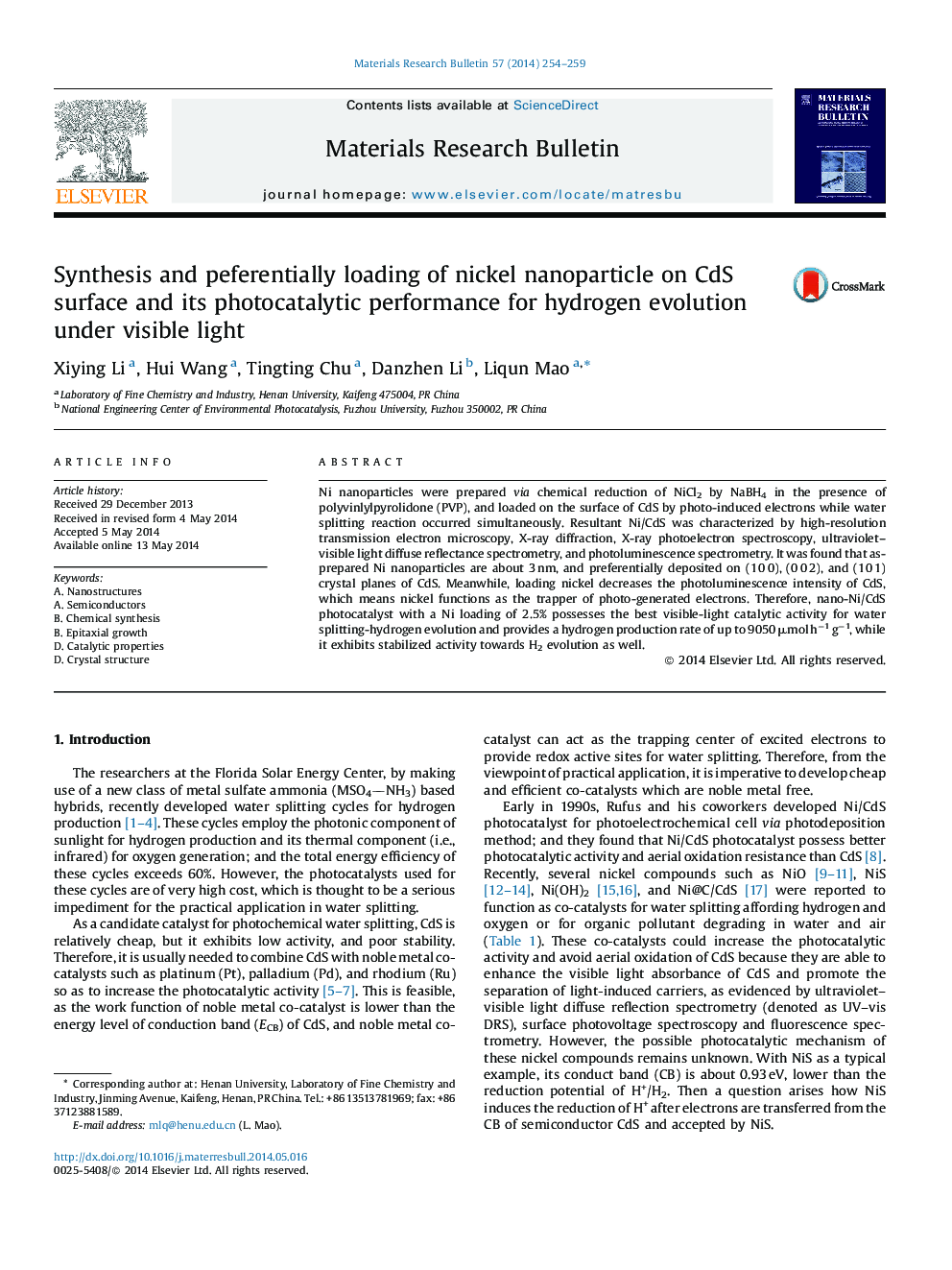| کد مقاله | کد نشریه | سال انتشار | مقاله انگلیسی | نسخه تمام متن |
|---|---|---|---|---|
| 1488274 | 1510718 | 2014 | 6 صفحه PDF | دانلود رایگان |

• Ni nanoparticles are prepared by chemical reduction and then loaded on CdS surface by photo-reduction.
• Non-noble metal Ni nanoparticles (size: about 3 nm) act as co-catalyst for photocatalytic H2 evolution.
• Nano-Ni/CdS exhibits high activity (9050 μmol h−1 g−1) and perfect stability.
Ni nanoparticles were prepared via chemical reduction of NiCl2 by NaBH4 in the presence of polyvinlylpyrolidone (PVP), and loaded on the surface of CdS by photo-induced electrons while water splitting reaction occurred simultaneously. Resultant Ni/CdS was characterized by high-resolution transmission electron microscopy, X-ray diffraction, X-ray photoelectron spectroscopy, ultraviolet–visible light diffuse reflectance spectrometry, and photoluminescence spectrometry. It was found that as-prepared Ni nanoparticles are about 3 nm, and preferentially deposited on (1 0 0), (0 0 2), and (1 0 1) crystal planes of CdS. Meanwhile, loading nickel decreases the photoluminescence intensity of CdS, which means nickel functions as the trapper of photo-generated electrons. Therefore, nano-Ni/CdS photocatalyst with a Ni loading of 2.5% possesses the best visible-light catalytic activity for water splitting-hydrogen evolution and provides a hydrogen production rate of up to 9050 μmol h−1 g−1, while it exhibits stabilized activity towards H2 evolution as well.
Ni nanoparticles were prepared via chemical reduction of aqueous NiCl2 by borohydride reducing agent in the presence of polyvinlylpyrolidone as a modifier to prevent fast growth of Ni crystals and their aggregation, and then preferentially deposited on (1 0 0), (0 0 2), and (1 0 1) crystal planes of CdS by photo-induced electrons while water splitting reaction occurred simultaneously. Resultant nickel nanoparticles have a size of about 3 nm, and contributes to decreasing the photoluminescence peak intensity of CdS, which means that nickel functions as the trapper of photo-generated electrons thereby quenching the photoluminescence of CdS. Therefore, nano-Ni/CdS photocatalyst with a Ni loading of 2.5% possesses the best visible-light catalytic activity for water splitting-hydrogen evolution and provides a hydrogen production rate of up to 9050 μmol h−1 g−1, while it exhibits stabilized activity towards H2 evolution as well.Figure optionsDownload as PowerPoint slide
Journal: Materials Research Bulletin - Volume 57, September 2014, Pages 254–259